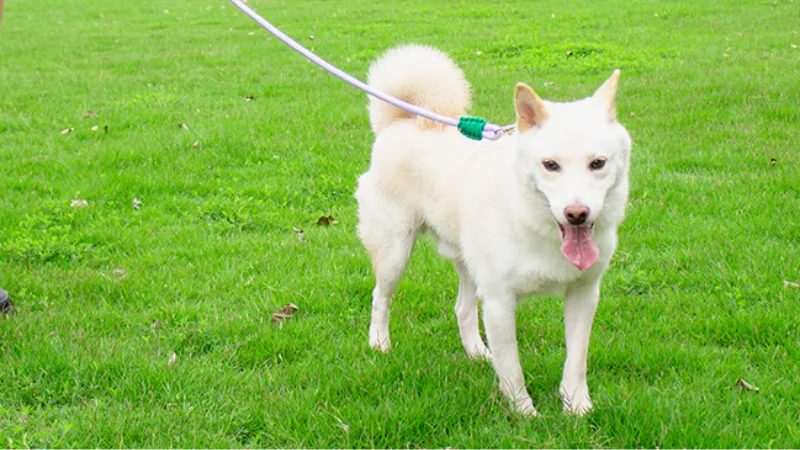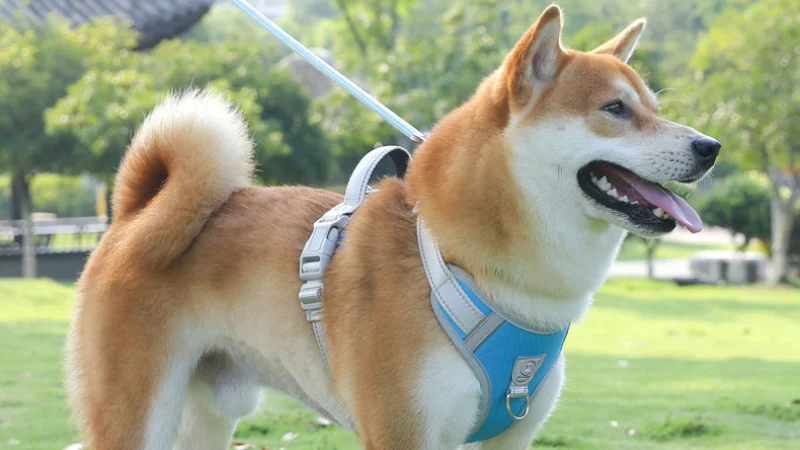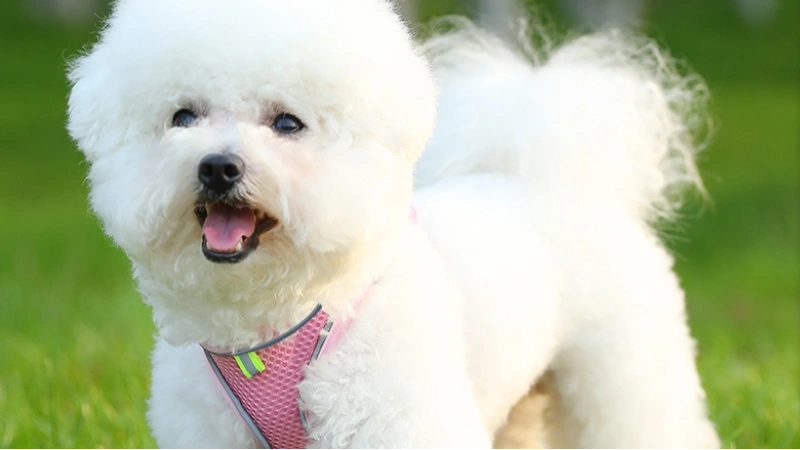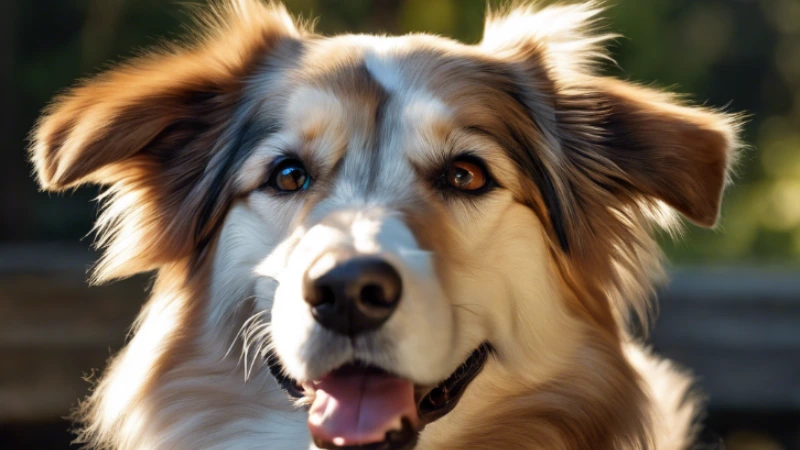When dog owners search for ways to prevent their pets from slipping out of harnesses and collars, they’re seeking practical solutions to ensure their furry friends’ safety during walks or outdoor activities. This comprehensive guide will address this concern and provide effective strategies to keep your dog secure.
Understanding the Problem
Dogs may slip out of harnesses and collars for various reasons:
- Improper fit
- Incorrect harness or collar type
- Lack of training
- Fear or anxiety
- Discomfort
- Curiosity or desire to explore
- Prey drive
Addressing these issues is crucial for your dog’s safety and your peace of mind. Let’s delve into each aspect of prevention in detail.
Proper Fitting: The Foundation of Security
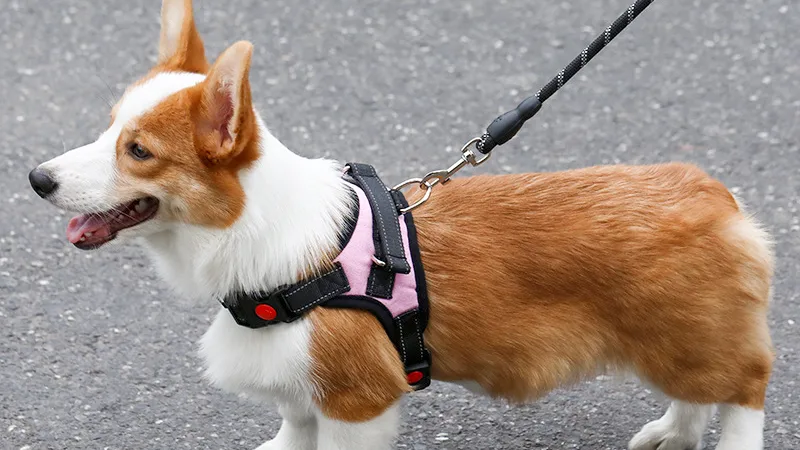
Ensuring a proper fit is the first and most crucial step in preventing escapes. A well-fitted harness or collar significantly reduces the chances of your dog slipping out.
Accurate Measurements:
- Use a soft measuring tape for your dog’s neck and chest
- For collars: Add 2 inches to neck measurements
- For harnesses: Measure between shoulders and behind elbows
- Consider your dog’s weight and body shape
Adjustability:
- Choose harnesses and collars with multiple adjustment points
- This allows customization for your dog’s unique body shape
- Look for equipment with at least 3-4 adjustment points
The Two-Finger Rule:
- You should be able to fit two fingers between the harness/collar and your dog’s skin
- Too loose: risk of slipping off
- Too tight: can cause discomfort or restrict breathing
Regular Reassessment:
- Check the fit every few weeks, especially for growing puppies
- Adjust for seasonal changes in coat thickness
- Monitor for weight changes that may affect fit
Selecting the Right Equipment
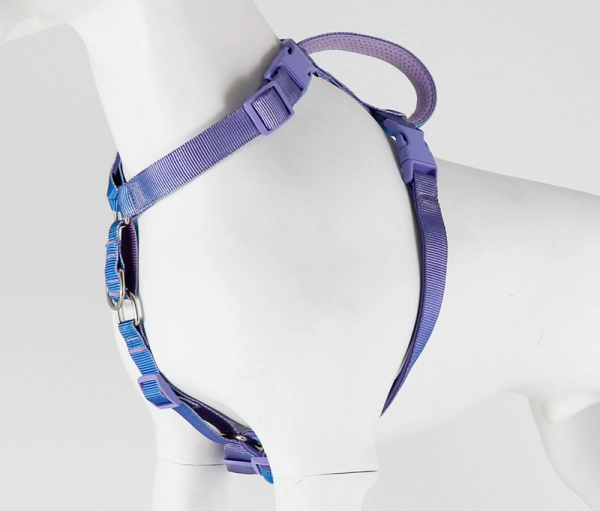
Choosing appropriate gear is essential for preventing escapes. Different types of harnesses and collars offer various benefits.
Escape-Proof Harnesses:
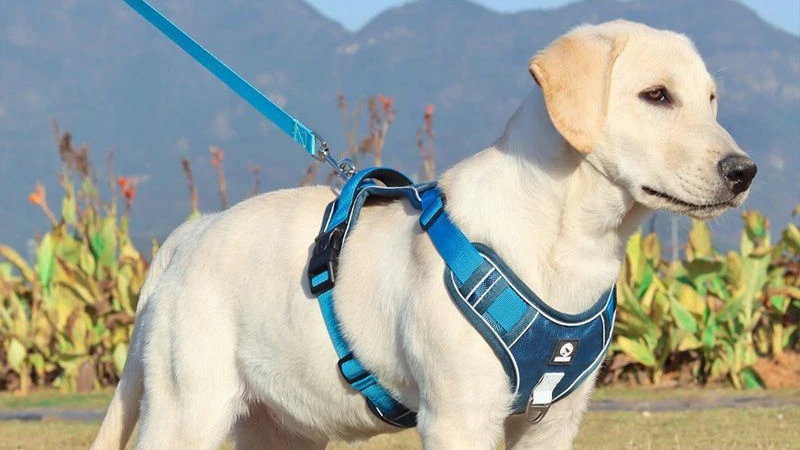
Features:
- Limited slip design
- Tightens under pressure
- Front and back leash attachments
Examples:
- Ruffwear Flagline Harness
- Rabbitgoo Escape Proof Dog Harness
- Mihachi Large Secure Dog Harness
Benefits:
- Difficult for dogs to back out of
- Provides better control during walks
Martingale Collars:
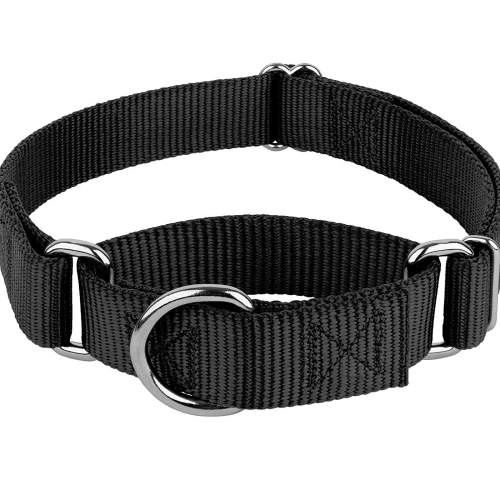
- Tighten slightly when pulled
- Prevent escape while maintaining comfort
- Ideal for dogs with narrow heads (e.g., Greyhounds, Whippets)
- Safer alternative to choke chains
Dual-Clip Harnesses:
- Allow leash attachment at front and back
- Provide better control
- Help keep harness in place
- Useful for dogs that tend to pull on the leash
Step-In Harnesses:
- Easy to put on and take off
- Distribute pressure evenly across the chest
- Less likely to slip off if properly fitted
Head Halters:
- Provide excellent control for strong pullers
- Discourage pulling behavior
- Require proper introduction and training
Training Techniques for Secure Walks
Proper training complements well-fitted gear and is crucial for preventing escapes.
Leash Training:
- Teach calm walking behavior
- Reduces pulling, keeping harness in place
- Use positive reinforcement techniques
- Practice in low-distraction environments first
Anti-Backing Up Commands:
- Discourage sudden movements that could lead to slipping
- Teach commands like “wait” or “stay”
- Reward your dog for maintaining position
Desensitization:
- Gradually expose your dog to situations that may cause anxiety
- Helps prevent fear-based escape attempts
- Use treats and praise to create positive associations
Recall Training:
- Teach a strong “come” command
- Practice in various environments
- Use high-value rewards for compliance
Harness/Collar Acceptance:
- Introduce equipment gradually
- Associate wearing gear with positive experiences
- Practice short sessions of wearing harness/collar indoors
Distraction Training:
- Teach your dog to focus on you despite environmental stimuli
- Use the “look at me” or “watch” command
- Reward eye contact and attention
Additional Security Measures
While proper fitting and training are essential, additional security measures can provide extra peace of mind.
Connector Straps:
- Attach both collar and harness
- Provides extra security if one fails
- Ensures a backup if your dog manages to slip out of one
Regular Fit Checks:
- Especially important for growing dogs
- Check for signs of discomfort or shifting during walks
- Adjust as needed before each outing
Balanced Accessories:
- If using harnesses with additional features (e.g., saddle bags)
- Ensure even distribution to prevent shifting
- Avoid overloading, which can cause discomfort
GPS Trackers:
- Attach a small GPS device to your dog’s collar or harness
- Helps locate your dog quickly if they do escape
- Provides real-time location updates
Identification Tags:
- Ensure your dog wears up-to-date ID tags
- Consider microchipping as a permanent form of identification
- Include your contact information on both collar and harness
Addressing Specific Concerns
Different dogs may have unique needs or challenges when it comes to preventing escapes.
For Anxious Dogs:
- Consider calming aids (e.g., ThunderShirt)
- Use pheromone sprays or collars to reduce stress
- Consult with a professional trainer or behaviorist
- Gradually expose them to anxiety-inducing situations
For Persistent Escape Artists:
- Use a combination of methods (e.g., escape-proof harness with a martingale collar)
- Increase supervision during walks
- Consider using a long-line for added control in open areas
- Work on building a stronger bond through training and positive experiences
For Dogs with Unique Body Shapes:
- Look for breed-specific harnesses
- Consider custom-fitted options
- Pay extra attention to fit around shoulders and chest
For Senior Dogs or Those with Mobility Issues:
- Choose harnesses with padded straps for comfort
- Look for designs that don’t restrict movement
- Consider harnesses with handles for assistance
For Puppies:
- Use adjustable harnesses that can grow with them
- Check fit frequently as they grow
- Focus on positive associations with wearing gear
Maintenance and Care
Proper maintenance of harnesses and collars is crucial for their effectiveness and your dog’s comfort.
Regular Cleaning:
- Keep harnesses and collars clean to prevent chafing
- Follow manufacturer’s care instructions
- Hand wash or machine wash on a gentle cycle
- Air dry to prevent shrinkage or damage
Inspect for Wear and Tear:
- Check for frayed edges, loose stitching, or worn materials
- Examine buckles, clips, and D-rings for damage
- Replace equipment as needed, typically every 1-2 years
Seasonal Adjustments:
- Account for changes in your dog’s coat thickness
- Adjust fit accordingly, especially during shedding seasons
- Consider different harness styles for different weather conditions
Proper Storage:
- Store harnesses and collars in a cool, dry place
- Avoid direct sunlight, which can degrade materials
- Keep out of reach of chewing puppies or destructive dogs
Rotate Equipment:
- If possible, have multiple harnesses or collars
- Rotating equipment can extend their lifespan
- Allows for thorough cleaning and drying between uses
Environmental Considerations
The environment in which you walk your dog can impact the likelihood of escapes.
Familiar Routes:
- Start with familiar, low-distraction routes
- Gradually introduce new environments as your dog becomes more comfortable
Avoid High-Stress Areas:
- Be aware of locations that may cause anxiety for your dog
- Gradually desensitize them to these areas over time
Weather Conditions:
- Be mindful of how weather affects your dog’s behavior
- Thunderstorms or fireworks may increase escape attempts
- Consider indoor activities during extreme weather
Time of Day:
- Choose walking times when distractions are minimal
- Early morning or late evening walks may be calmer
Leash-Free Areas:
- Use extra caution in off-leash areas
- Ensure recall is solid before allowing off-leash time
- Consider long-lines for added security in open spaces
Conclusion
Preventing dogs from slipping out of harnesses and collars requires a comprehensive approach:
- Ensure proper fit through accurate measurements and regular adjustments
- Choose appropriate equipment designed to prevent escapes
- Implement effective training techniques
- Use additional security measures when necessary
- Address specific concerns based on your dog’s individual needs
- Maintain and care for your dog’s gear
- Be mindful of environmental factors that may influence escape attempts
By combining these strategies, you can significantly reduce the risk of your dog escaping from their harness or collar, ensuring safer and more enjoyable walks for both you and your furry companion.

